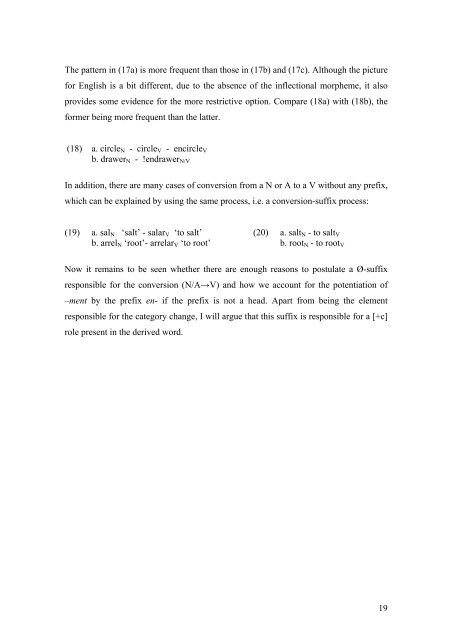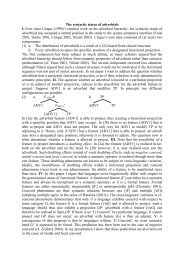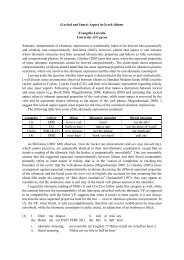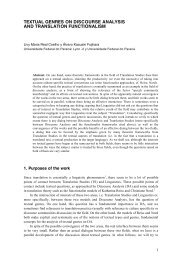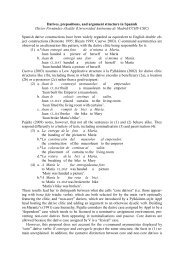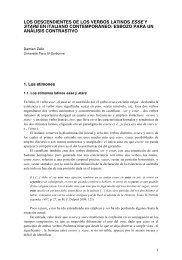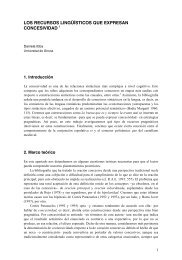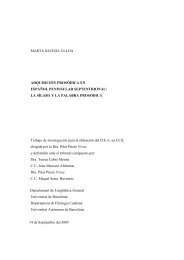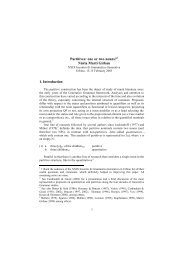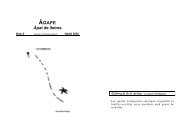Prefixation in English and Catalan - Departament de Filologia ...
Prefixation in English and Catalan - Departament de Filologia ...
Prefixation in English and Catalan - Departament de Filologia ...
Create successful ePaper yourself
Turn your PDF publications into a flip-book with our unique Google optimized e-Paper software.
The pattern <strong>in</strong> (17a) is more frequent than those <strong>in</strong> (17b) <strong>and</strong> (17c). Although the picture<br />
for <strong>English</strong> is a bit different, due to the absence of the <strong>in</strong>flectional morpheme, it also<br />
provi<strong>de</strong>s some evi<strong>de</strong>nce for the more restrictive option. Compare (18a) with (18b), the<br />
former be<strong>in</strong>g more frequent than the latter.<br />
(18) a. circleN - circleV - encircleV<br />
b. drawerN - !endrawerN/V<br />
In addition, there are many cases of conversion from a N or A to a V without any prefix,<br />
which can be expla<strong>in</strong>ed by us<strong>in</strong>g the same process, i.e. a conversion-suffix process:<br />
(19) a. salN ‘salt’ - salarV ‘to salt’ (20) a. saltN - to saltV<br />
b. arrelN ‘root’- arrelarV ‘to root’ b. rootN - to rootV<br />
Now it rema<strong>in</strong>s to be seen whether there are enough reasons to postulate a Ø-suffix<br />
responsible for the conversion (N/A→V) <strong>and</strong> how we account for the potentiation of<br />
–ment by the prefix en- if the prefix is not a head. Apart from be<strong>in</strong>g the element<br />
responsible for the category change, I will argue that this suffix is responsible for a [+c]<br />
role present <strong>in</strong> the <strong>de</strong>rived word.<br />
19


